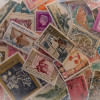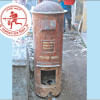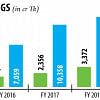We must do better with our stamps

As a young boy, I had several thousand stamps in my collection. Back then, receiving a letter in the post meant new stamps! I still remember receiving my first stamp of Ireland, attached to a letter received from a pen pal. Yes, back then we had pen pals. We communicated with them through the postal service – in most cases, we never even met.
But clearly, I didn't learn to fully appreciate the value of my stamp collection then, as I traded it all with a neighbour just so I could buy seven blank TDK-D90 tapes to record the full catalogue of Pink Floyd, released by Rainbow at Elephant Road (our primary source of music in Dhaka back then). My only consolation for that naive and ignorant act is that I was young.

Collecting postage stamps – also known as philately – used to be one of the more common hobbies before the advent of the franking machine and the email era. It was encouraged by teachers and family members, as it tickled the curiosity of the young mind to learn about other countries of the world and their cultures, flora, and fauna. Stamps often bear images of characters and characteristics of the country they represent.
My grandfather, Hakim Habibur Rahman, from Old Dhaka, was a passionate collector of various items of historical significance. He was one of the founding members of Dhaka Museum, where most of his collections are still on display. The Bangladesh Post Office issued a stamp worth Tk 8 in 2003 commemorating his contributions to Unani medicine, his contributions of historically important artefacts to the Dhaka Museum, and his books of historical and architectural significance, including "Dhaka Ponchash Bochhor Aage (Dhaka 50 Years Ago)" (first published in 1945). I'm obviously very proud to have that stamp in my collection.
I don't know whether it was because of the fact that my grandfather was a collector, or the inspiration derived from the commemorative stamp of him that hangs in my living room, or whether I deeply regret having traded in my stamp collection as a child, but I recently restarted collecting postage stamps, and have been buying mint commemorative stamps on a regular basis.

As someone who is passionate about my country and world music, I was delighted to come across the stamp issued by the Bangladesh Post Office commemorating the 50th anniversary of The Concert for Bangladesh held in New York City in 1971. But, as happy as I was to add this to my collection, upon closer inspection, I was extremely disappointed to realise that such a significant commemorative stamp was one of the most poorly curated and designed stamps issued by the post office. The designer has not only downloaded low resolution images of the two artistes represented in the stamp – namely, the legendary Pandit Ravi Shankar and George Harrison of The Beatles – from the internet, they also were not bothered to find an actual photo of the album cover for the concert; that, too, was downloaded from the world wide web.
But what's even worse is that the designer copied a stock photo of the number "50" from the internet and didn't even remove the watermark (usually put on stock photos which are required to be purchased).

We are not talking about someone copying a design to put on their 50th marriage anniversary invitation card – this is a government-issued stamp, similar to a currency. The original designers of the artworks could, in fact, claim copyright infringement for the unauthorised use of their designs/photos.
Above all, a photo of a rifle is put next to the artistes who have forever fought for peace. As most readers may recall, The Concert for Bangladesh was organised to raise money to feed the destitute refugees, not to fight or finance the Liberation War.
The Concert for Bangladesh is a matter of pride for us – not only because it bears the name of our country, but also because "it was one of most moving and intense musical experiences of the century" (Ravi Shankar, The Concert for Bangladesh DVD sleeve, reissued in 2005). Through an emotional appeal from Pandit Ravi Shankar to do something to "relieve Bangladesh," the concert was organised by former The Beatles member George Harrison to raise international awareness and to raise relief funds for the refugees from then East Pakistan, especially children who were starving to death. The concert bears particular significance, as it was a call-to-action responded to by some of the most prominent musicians of the time, including Bob Dylan, Eric Clapton, and another The Beatles member, Ringo Starr. It was the first-ever benefit concert of such a magnitude, one which set in motion a precedent for future fundraisers of similarly epic scale, such as LiveAid, FarmAid, and others around the world.
Our postage stamps represent our country, as they travel to all corners of the world bearing the name of Bangladesh. Commemorative stamps are of greater importance, as they signify the country's history, ethos, and culture. The stamp commemorating the "50th Anniversary of The Concert for Bangladesh" issued in 2021 does exactly the opposite of that. It showcases a clueless, ill-begotten, and poorly designed illustration of ourselves. It is not only a failure on the designer's part, but also symptomatic of the ignorance of all the high officials who inspected and approved it before it went to print.
The "50th Anniversary of The Concert for Bangladesh" stamp was meant to showcase the pride of us Bangalees, and tell a story that inspired generations to engage in philanthropy through music. Instead, it represents a shoddy work misrepresenting us as a nation. The stamp should be cancelled and withdrawn, and replaced by a carefully curated and better-designed stamp, as we expect all stamps of Bangladesh to be.
M R Khan is a risk management specialist and a philatelist.

 For all latest news, follow The Daily Star's Google News channel.
For all latest news, follow The Daily Star's Google News channel. 








Comments